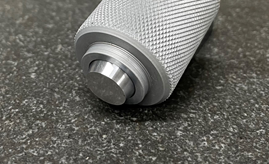Features:
- Flush pins are typically made of hardened tool steel and have a stepped or ground shoulder on the end.
- The shoulder is the reference surface for the measurement.
- To use a flush pin, the pin is inserted into the hole or feature to be measured.
- The shoulder on the pin should rest flush against the top surface of the workpiece.
- The depth of the hole or feature is then measured from the shoulder of the pin to the top surface of the workpiece.
- Flush pins are used in a variety of industries, including manufacturing, automotive, aerospace, and electronics.
- They are particularly useful for measuring the depth of blind holes and holes in hard-to-reach locations.
Here are some specific examples of how flush pins are used in measurement:
- Measuring the depth of a drilled hole in a machine part
- Measuring the depth of a blind hole in a casting
- Measuring the depth of a counterbore in a machined surface
- Measuring the depth of a port in a cylinder
- Measuring the depth of a slot in a milled surface

Here are some of the benefits of using flush pins:
- They are accurate and reliable.
- They are easy to use.
- They are durable and can withstand repeated use.
- They are available in a variety of sizes to accommodate a wide range of measurement applications.
Overall, flush pins are an essential tool for anyone who needs to measure the depth of holes, steps, and counterbores.


